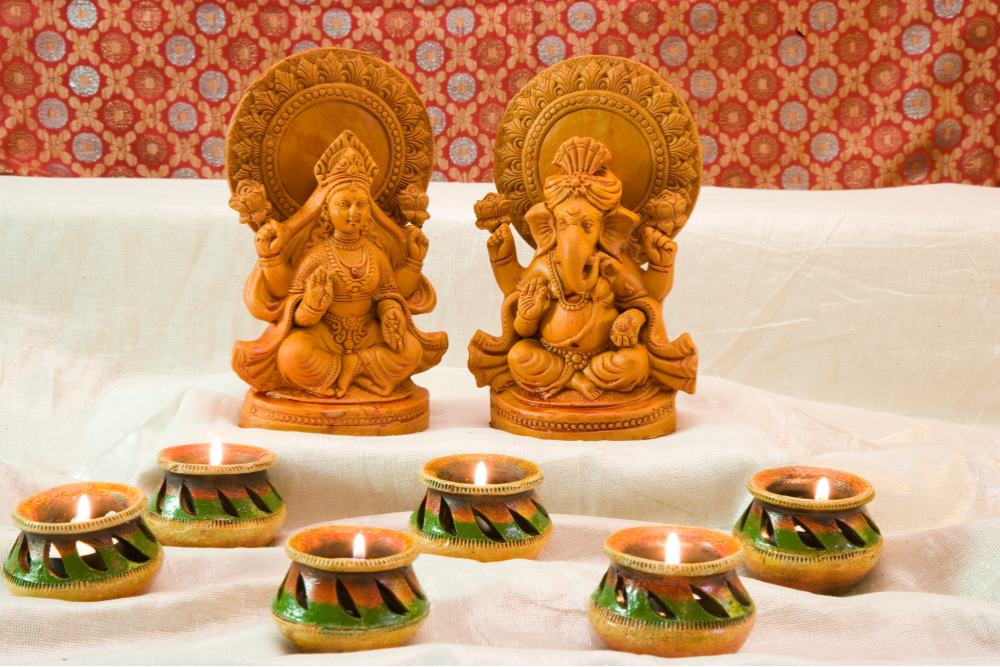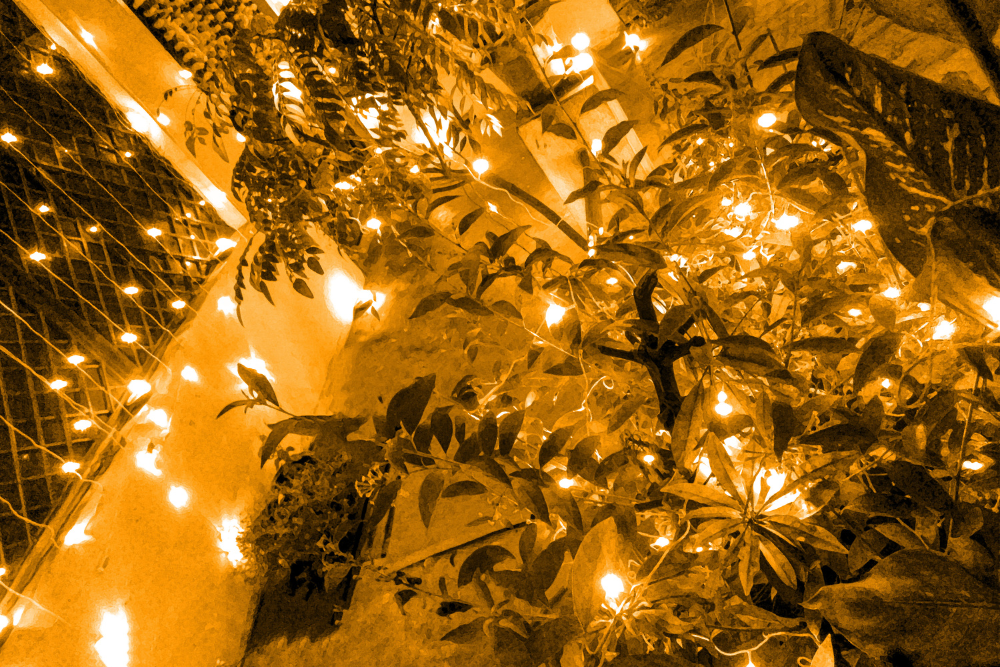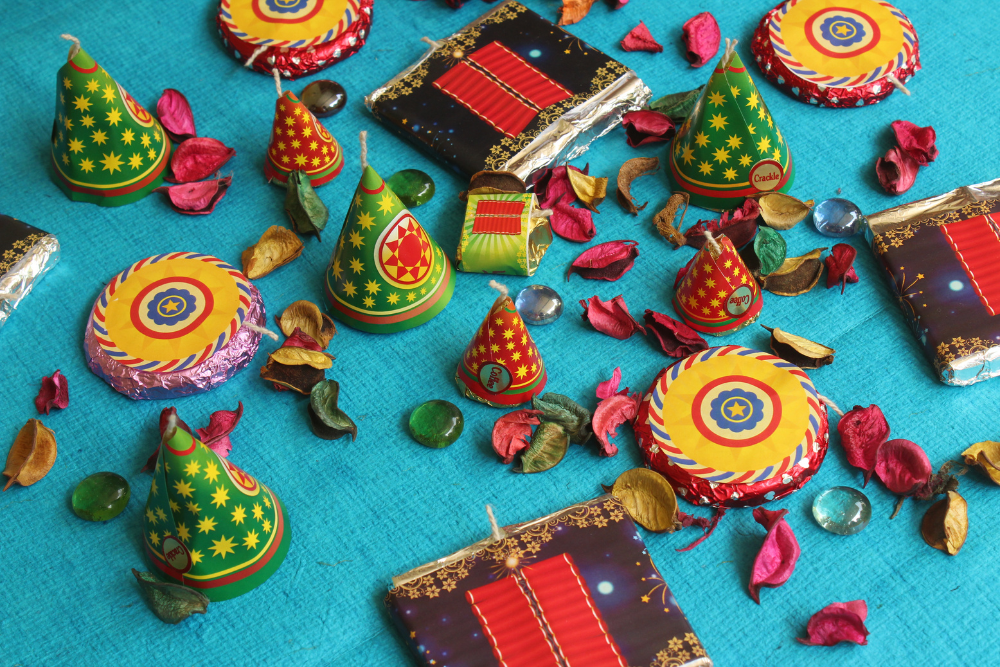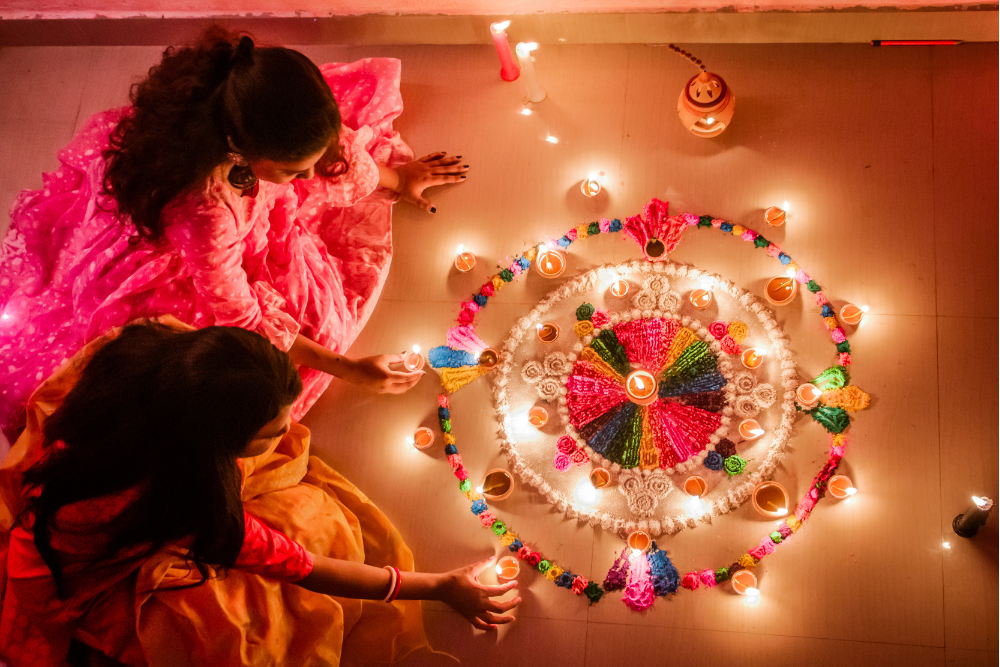Diwali, known as the festival of lights, holds immense cultural significance in India and among Hindu communities worldwide. This ancient festival symbolizes the triumph of light over darkness and good over evil. Celebrated with great enthusiasm, Diwali spans five days and is observed during the Hindu month of Kartik. The festival’s cultural significance lies in its various traditions and rituals. The festival encourages forgiveness and reconciliation, promoting harmony among individuals. Rooted in tradition, families unite during the Festival of Lights, adorning homes with colorful decorations and exchanging delectable sweets.
In this blog, we will explore seven important traditional customs followed during the Festival of Lights, shedding light on the significance and beauty of each one.
Rangoli – Welcoming the Goddess with Artistic Designs

One of the most visually striking customs during the Festival of Lights is the creation of Rangoli. In Rangoli, people create intricate and colorful designs on the floor, typically at the entrance of homes. They believe that these designs not only serve as a form of decoration but also welcome the Goddess Lakshmi, who is the deity of wealth and prosperity.
Families engage in the process of creating Rangoli together, using various colored powders, flowers, and other materials to form beautiful patterns and motifs. The designs can range from simple geometric shapes to elaborate, intricate works of art. People take great pride in their Rangoli creations, and it is a way of showcasing their creativity and devotion to the Goddess.
Lighting Diyas – The Symbol of Triumph over Darkness

The Festival of Lights is aptly named because millions of small clay lamps, called “diyas,” are lit all around homes and temples during this time. The lighting of diyas signifies the victory of light over darkness and knowledge over ignorance. It is believed that the divine light of the diyas dispels negativity and ushers in positivity, peace, and prosperity.
Families gather to light diyas both inside and outside their homes, creating a mesmerizing display of flickering flames that cast a warm and welcoming glow. In addition to diyas, people also use oil lamps and candles to illuminate the surroundings. It’s a tradition that not only adds to the festive ambiance but also holds deep spiritual significance.
Prayers and Pujas – Seeking Blessings for Prosperity

The Festival of Lights is a time for religious observance and spiritual reflection. Families come together to perform elaborate prayers and pujas (rituals) to seek the blessings of the divine. People worship Goddess Lakshmi, Lord Ganesha, and other deities during Diwali.
The Lakshmi Puja, in particular, is central to the celebrations. It involves the preparation of a sacred altar, offering of fruits, flowers, incense, and sweets, and the recitation of hymns and mantras. Devotees pray for wealth, health, and well-being for their families and loved ones. It’s a time when people express their gratitude for what they have and seek blessings for a brighter future.
Exchanging Gifts – Strengthening Bonds of Love

The exchange of gifts is a heartwarming and time-honored tradition during the Festival of Lights. It is a way for people to express their love, gratitude, and good wishes to family and friends. Giving and receiving gifts is not only a gesture of kindness but also a means of strengthening social bonds.
Traditional gifts during Diwali often include sweets, dry fruits, clothes, jewelry, and decorative items. The practice of giving and receiving gifts fosters a sense of togetherness and reinforces the importance of relationships. People also believe that this act of giving invites the blessings of the divine and brings joy and prosperity into the lives of both the giver and the recipient.
Cleaning and Decorating Homes – Preparing for the Festival

In the weeks leading up to the Festival of Lights, homes undergo a thorough cleaning and renovation. This custom, known as “Diwali cleaning,” is a way of preparing the environment for the arrival of the Goddess Lakshmi. It signifies the removal of negativity and the welcoming of positivity into one’s life.
Once the cleaning is complete, homes are adorned with colorful decorations. It is common to see homes and businesses draped in vibrant lights, garlands, and colorful rangoli patterns. Traditional clay lamps and lanterns are also hung to add to the festive atmosphere. The meticulous decoration of homes not only makes them visually appealing but also creates a sense of anticipation and excitement.
Bursting Firecrackers – Celebrating with Light and Sound

Despite environmental concerns, firecrackers remain integral to many Diwali celebrations, though their tradition is under scrutiny. People believe that firecrackers symbolize the victory of good over evil by driving away darkness and negativity with light and sound.
For some, the excitement of fireworks and the dazzling displays of colors in the night sky are a source of great joy. Recognizing the environmental impact of firecrackers, there’s a need for sustainable alternatives that preserve the festival’s essence without harming the planet.
Feasting and Sharing Sweets – Indulging in Culinary Delights

Last but certainly not least, the Festival of Lights is synonymous with feasting and indulging in a variety of delectable sweets and savories. Families come together to prepare and enjoy a wide array of traditional dishes. People particularly enjoy Diwali sweets, or “mithai,” and exchange them among friends and family.
Some of the most beloved Diwali sweets include ladoos, jalebi, barfi, and gulab jamun. These treats are not only delicious but also symbolize the sweetness of life and the joy of sharing with loved ones. During this festival, family members showcase their culinary skills, and everyone relishes the rich and flavorful dishes prepared.
Conclusion
Diwali, celebrated with immense enthusiasm and devotion, is a mosaic of traditions uniting people in the triumph of light over darkness, good over evil, and prosperity over adversity. Diwali embodies love, togetherness, and hope through Rangoli, diya lighting, prayers, gift exchanges, and festive feasting.
While some of these customs have evolved with time and face new challenges, their underlying significance remains intact. The Festival of Lights symbolizes the enduring power of tradition and celebrating the light within ourselves and the world. It’s a time when we all can renew our connections, express gratitude, and look forward to a brighter, more prosperous future.
